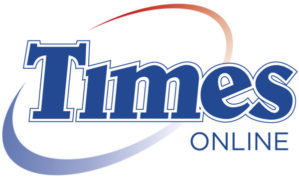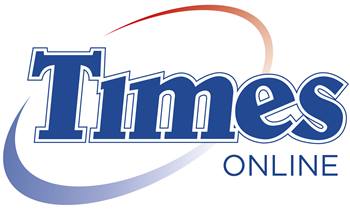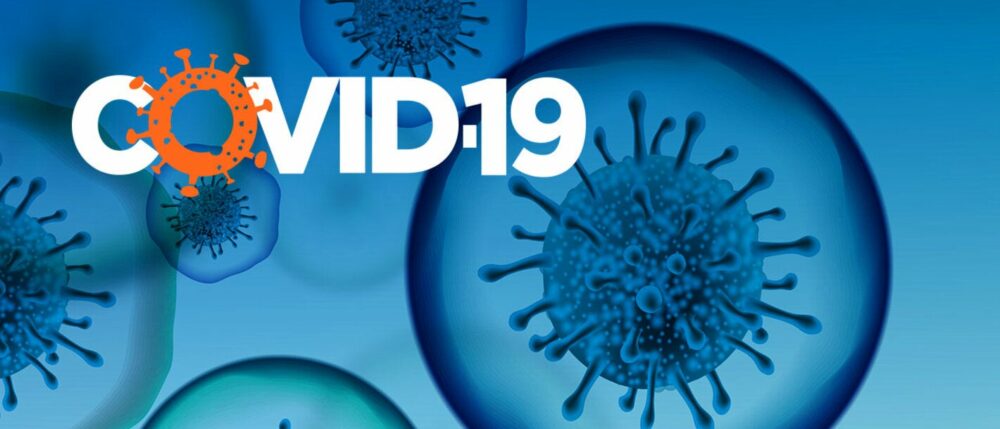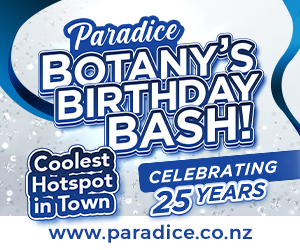MINISTRY OF HEALTH UPDATE
Increased Rapid Antigen Test use at community testing centres
Rapid Antigen Tests (RATs) will be used as the primary test at Auckland community testing centres (CTCs) from today to help meet demand for testing as the Omicron outbreak grows.
The move, which is part of the Ministry of Health’s planned testing strategy, follows RATs being rolled out to CTCs in Waikato, Bay of Plenty, and Southern yesterday to be used in conjunction with PCR tests in those centres.
RATS will be rolled out to CTCs at other centres across the country this week. The site will determine which test (PCR or RAT) is best for you.
In Auckland, if people feel uncomfortable doing a RAT or a staff member identifies it as being appropriate, they may still get a PCR test.
It was anticipated that as the outbreak grows, more people would have COVID-19 and there would be more close contacts who need to be tested.
The increased use of RATs in Phase 2 and Phase 3 of our response will relieve pressure on the PCR testing and reserve it for those who are unwell and more susceptible to the effects of Covid-19.
The new testing regime in Auckland will mean symptomatic people and/or asymptomatic close contacts whose RAT is positive will be considered a case and do not need to be verified through a PCR test. This will further relieve pressure on the system. This change will also be rolled out to other centres.
After testing, people will need to record their result in My Covid Record, as well as advise their employer. If you cannot access My Covid Record, then they should call 0800 222 478.
Although there are still significant global supply constraints, we have secured the delivery of enough RATs to help New Zealand through a widespread Omicron outbreak in the coming months. There are currently 6.9 million RATs in the system with around 14.7 million expected by the end of the month.
The growing outbreak across the country has resulted in laboratories no longer being able to pool their PCR testing capacity, which had previously helped reduce pressure in areas with high case numbers. There is a current baseline capacity of around 31,000 PCR tests per day.
People in the capital and at the top of the South are leading the charge in getting their booster shots in the fight against Omicron, with 75 per cent of eligible people from the both Capital & Coast and Nelson-Marlborough DHBs having now had their booster.
Collectively, this represents almost a quarter of a million people across both regions who have stepped up in recent weeks, contributing to more than 2.2 million New Zealanders who have played their part in getting their booster so far.
We’re asking everyone who has had a booster to remind their friends and whanau to do the same – people are eligible for a booster dose if it has been more than three months since their second dose.
A high rate of booster doses across the country will lower the number of people becoming severely ill from Omicron and ensure there is capacity in our health system for anyone who needs care.
There were 25,367 booster doses administered across the motu yesterday.
Testing reminder
With Covid-19 spreading rapidly, a significant number of concerned people who don’t need a test are going to get a test are continuing to turn up – those are people who don’t have any Covid-19 symptoms and are not a contact of a case.
The Ministry of Health continues to stress the importance of the right people being tested for the right reasons.
People should only get tested if they have cold or flu symptoms, have been identified as a close contact of a case, or have been asked to get tested by a health official.
Covid-19 vaccine update
Vaccinations administered in New Zealand
- Vaccines administered to date: 4,017,433 first doses; 3,954,560 second doses; 32,757 third primary doses; 2,223,385 booster doses: 230,960 paediatric first doses and 2,081 paediatric second doses.
- Vaccines administered yesterday: 566 first doses; 1239 second doses; 178 third primary doses; 25,367 booster doses; 1368 paediatric first doses and 118 paediatric second doses.
People vaccinated (including those vaccinated overseas)
- All Ethnicities (percentage of eligible people aged 12+): 4,060,013 partially vaccinated (96.5%); 3,995,818 second doses (94.9%), 2,225,028 boosted (67.7% of those eligible).*
- Māori (percentage of eligible people aged 12+): 518,191 partially vaccinated (90.7%); 496,668 second doses (87%), 185,703 boosted (57% of those eligible)
- Pacific Peoples (percentage of eligible people aged 12+): 280,206 first doses (97.7%); 273,850 second doses (95.5%), 111,346 boosted (54.5% of those eligible)
- 5 to 11-year-olds all ethnicities: 230,871 first doses (48.5%)
- 5 to 11-year-olds – Māori: 33,328 first doses (28.8%).
- 5 to 11-year-olds – Pacific Peoples: 19,849 first doses (40.2%)
*Note, that the number for “people vaccinated” differs slightly from “vaccines administered” as it includes those that have been vaccinated overseas.
Vaccination rates for all DHBs (percentage of eligible people aged 12 +)
- Northland DHB: partially vaccinated (90.3%); fully vaccinated (87.7%); boosted (66.9%)
- Auckland Metro DHB: partially vaccinated (97.3%); fully vaccinated (96%); boosted (64.5%)
- Waikato DHB: partially vaccinated (95.2%); fully vaccinated (93.4%); boosted (64.3%)
- Bay of Plenty DHB: partially vaccinated (95.2%); fully vaccinated (93.1%); boosted (65.3%)
- Lakes DHB: partially vaccinated (93.6%); fully vaccinated (91.3%); boosted (66%)
- MidCentral DHB: partially vaccinated (96.8%); fully vaccinated (95.1%); boosted (70.3%)
- Tairāwhiti DHB: partially vaccinated (93.2%); fully vaccinated (90.5%); boosted (66.7%)
- Whanganui DHB: partially vaccinated (92.3%); fully vaccinated (90.4%); boosted (71.4%)
- Hawke’s Bay DHB: partially vaccinated (97.1%); fully vaccinated (95%); boosted (69%)
- Taranaki DHB: partially vaccinated (94.8%); fully vaccinated (93%); boosted (65%)
- Wairarapa DHB: partially vaccinated (96.7%); fully vaccinated (94.9%); boosted (73.1%)
- Capital & Coast DHB: partially vaccinated (98.7%); fully vaccinated (97.7%); boosted (74.8%)
- Hutt Valley DHB: partially vaccinated (96.9%); fully vaccinated (95.6%); boosted (72%)
- Nelson Marlborough DHB: partially vaccinated (96.8%); fully vaccinated (95.2%); boosted (74.7%)
- West Coast DHB: partially vaccinated (93%); fully vaccinated (91%); boosted (71.5%)
- Canterbury DHB: partially vaccinated (99.7%); fully vaccinated (98.5%); boosted (69.1%)
- South Canterbury DHB: partially vaccinated (95.4%); fully vaccinated (94%); boosted (72.5%)
- Southern DHB: partially vaccinated (97.8%); fully vaccinated (96.5%); boosted (72.5%)
Hospitalisations
- Cases in hospital: total number 179: North Shore: 33; Middlemore: 68; Auckland: 58; Tauranga: 4; Lakes: 3; Waikato: 8; Hutt Valley: 2; Capital and Coast: 1; Canterbury: 2
- Average age of current hospitalisations: 51
- Cases in ICU or HDU: 1
- Vaccination status of current hospitalisations (Northern Region only, excluding Emergency Departments): Unvaccinated or not eligible (19 cases / 14.7%); partially immunised <7 days from second dose or have only received one dose (4 cases / 3.1%); fully vaccinated at least 7 days before being reported as a case (64 cases / 49.6%%); unknown (15 cases / 11.6%)
Cases
- Seven day rolling average of community cases: 2257
- Seven day rolling average of border cases: 8
- Number of new community cases: 3297
- Location of new community cases*: Northland (40), Auckland (1729), Waikato (297), Bay of Plenty (157), Lakes (54), Hawke’s Bay (18), MidCentral (56), Whanganui (5), Taranaki (30), Tairāwhiti (16), Wairarapa (16), Capital and Coast (123), Hutt Valley (28), Nelson Marlborough (85), Canterbury (176), South Canterbury (7), Southern (455), West Coast (3)
- Number of new cases identified at the border: 8
- Location of origin of border cases: Full travel history not obtained (8)
- Number of active community cases (total): 21,648 (cases identified in the past 21 days and not yet classified as recovered)
- Confirmed cases (total): 38,951
* Please note, the Ministry of Health’s daily reported cases may differ slightly from those reported at a DHB or local public health unit level. This is because of different reporting cut off times and the assignment of cases between regions, for example when a case is tested outside their usual region of residence. Total numbers will always be the formal daily case tally as reported to the WHO.
Tests
- Number of tests total (last 24 hours): 27,550
- Tests rolling average (last 7 days): 28,951
- Testing positivity (last 24 hours): 12.2%
- Number of Rapid Antigen Tests stock available in New Zealand: 6.9 million
Updates of note
In recent days, the number of cases reported for Southern DHB has been lower than the true number because a large number of people have tested positive who have National Health Numbers linked to a home address outside of the Southern DHB region – these cases have been included in other regions’ case counts.
A large number of people who returned a positive result in the Southern region yesterday who have addresses outside of the region are included in Southern’s case count today after work by health officials to reclassify the cases. This explains why there is a larger increase in Southern’s cases reported today compared with previous days.
It is important to note that a case undercount anywhere in the country does not significantly impact our assessment of the outbreak, public health decision-making or public health advice.
Based on overseas experiences, the Ministry of Health has been expecting the true number of community cases to be higher than the cases reported each day and this has been factored into our Omicron planning.









